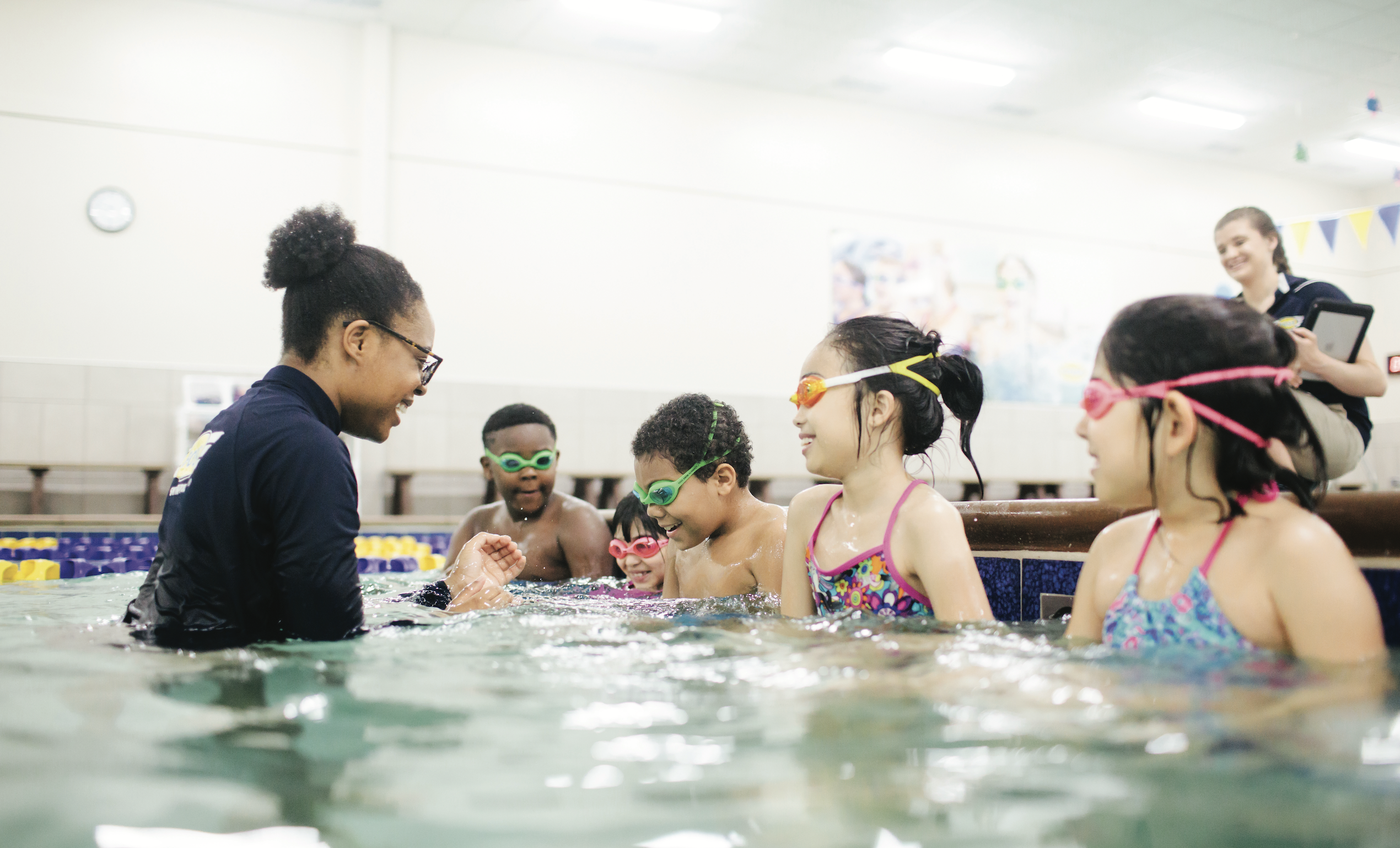Optimizing the size of a swim class is important at every stage of learning and mastering swim skills. At Foss Swim School, we’ve learned over the years that the optimal class size varies with the class level, and not always in the way you might expect.
For our more advanced levels (Middle 5 and Big 4 and 5), that optimal size is actually an increase from class sizes at lower levels. While the exact number may vary from school to school based on factors like pool lane width (more on that later) typically these higher-level classes have a student-to-teacher ratio of 5, 6, or 7 to 1.
Of course, that’s not to say all classes at those levels reach that number since demand varies, nor that a student at those levels in a smaller class will be negatively affected. Individual students may thrive in different class environments, too. But to help FOSS families understand more about how our program is structured and what to watch for in class, here are the reasons you might find your stronger swimmers in a bigger group.
Classes Designed for Distance, Endurance and Refinement
Each of our swim school levels is designed to focus on specific aspects of swimming – water acclimation in our Backfloat Baby levels, learning strokes step-by-step throughout our Learn to Swim levels. In these higher levels, which we call the Swim Stronger progression, the biggest focus is on building endurance. Here’s how larger class sizes fit into that goal:
- Longer class times: Part of building endurance and strength comes from simply swimming longer. These classes are 45-60 minutes long simply to allow students more time actually swimming. Larger classes where each swimmer is on their own for more time mean more swimmers can participate in a group while getting the same experience.
- Longer lane lengths: In these levels, the lanes get longer too – 25 yards, typically, to give students the length they need to get in a rhythm and swim longer between turns. Longer lanes can hold more swimmers comfortably. (Some of our locations have shorter lanes, and in these pools, class size may be adjusted accordingly.)
- More independent swimming: A student in these levels has a strong command of the four basic strokes we teach at FOSS, and won’t require much in the way of step-by-step instruction. With some setup and demonstration by the teacher, the swimmers will be equipped to swim for some time independently, until the teacher calls the group together for the next segment.
- Focused teacher interaction: Because there is more time swimming and more lap length, they can focus on tips and pointers with each student one-on-one while the rest of the class is swimming, providing individualized refinements as needed.
- Meeting the challenge: At this age and skill level, students are most motivated by other swimmers like themselves. A larger group offers more challenges and helps fill the lane with swimmers; each student can see and be motivated by the swimmer in front of them. A smaller group spread out over longer lanes dilutes this effect, while the larger group tends to push its members to strength their abilities.
- Swim team feel: We also recognize that many swimmers in these higher levels may go on to swim competitively at school or in a local league. Larger classes and multiple swimmers sharing a lane is the norm in these environments. Swimmers also have to learn how to time their turns and share their space for everyone’s benefit. They start learning these skills at FOSS.
The next Swim Path step toward mastery and fun
Another benefit of bigger classes for preteens – it’s fun! These bigger groups build a sense of camaraderie and support, and more swimmers together enhances that feeling. There will be a broader range of skill levels and more opportunities for peer interactions and friendships, all of which are a real plus of a bigger class.
There’s also the practical benefit that FOSS can offer more swimmers the opportunity to swim at this level thanks to larger classes. Since these levels require more pool space and more time, we can’t have as many of these sessions in a week. Bigger group mean more students can enroll.
So if you see your swimmer’s next level is a bit bigger than their last level, know that it’s all part of the Swim Path process. Your swimmer is moving on to new abilities and learning new things, and in these classes, more really is merrier!
